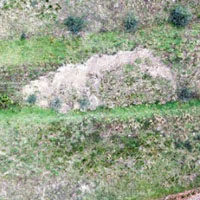UAV-SfM 4D mapping of landslides activated in a steep terraced agricultural area

Published:18 March 2021
Abstract Views: 2614
PDF: 858
HTML: 72
HTML: 72
Publisher's note
All claims expressed in this article are solely those of the authors and do not necessarily represent those of their affiliated organizations, or those of the publisher, the editors and the reviewers. Any product that may be evaluated in this article or claim that may be made by its manufacturer is not guaranteed or endorsed by the publisher.
All claims expressed in this article are solely those of the authors and do not necessarily represent those of their affiliated organizations, or those of the publisher, the editors and the reviewers. Any product that may be evaluated in this article or claim that may be made by its manufacturer is not guaranteed or endorsed by the publisher.
Similar Articles
- Eutiquio Gallego, Manuel Moya, Esperanza Ayuga-Téllez, Ana I. García, Francisco Ayuga, The influence of management and construction methods in the repair costs of Spain’s low-volume road network , Journal of Agricultural Engineering: Vol. 47 No. 2 (2016)
- Marzia Quattrone, Giovanna Tomaselli, Lara Riguccio, Patrizia Russo, Assessment of the territorial suitability for the creation of the greenways networks: Methodological application in the Sicilian landscape context , Journal of Agricultural Engineering: Vol. 48 No. 4 (2017)
- Remo Alessio Malagnino, Performance analysis of photovoltaic plants installed in dairy cattle farms , Journal of Agricultural Engineering: Vol. 46 No. 2 (2015)
- Zhongkuan Wang, Sheng Wen, Yubin Lan, Yue Liu, Yingying Dong, Variable-rate spray system for unmanned aerial applications using lag compensation algorithm and pulse width modulation spray technology , Journal of Agricultural Engineering: Vol. 55 No. 1 (2024)
- Alessandro D'Emilio, Simona M.C. Porto, Giovanni Cascone, Marco Bella, Marco Gulino, Mitigating heat stress of dairy cows bred in a free-stall barn by sprinkler systems coupled with forced ventilation , Journal of Agricultural Engineering: Vol. 48 No. 4 (2017)
- Valentina Giovenzana, Stefano Baroffio, Roberto Beghi, Andrea Casson, Alessia Pampuri, Alessio Tugnolo, Diego De Filippi, Riccardo Guidetti, Technological innovation in the winery addressing oenology 4.0: testing of an automated system for the alcoholic fermentation management , Journal of Agricultural Engineering: Vol. 52 No. 4 (2021)
- Volodymyr Bulgakov, Simone Pascuzzi, Semjons Ivanovs, Volodymyr Kuvachov, Yulia Postol, Francesco Santoro, Viktor Melnyk, Study of the steering of a wide span vehicle controlled by a local positioning system , Journal of Agricultural Engineering: Vol. 52 No. 3 (2021)
- Andrea De Montis, Amedeo Ganciu, Fabio Recanatesi, Antonio Ledda, Vittorio Serra, Mario Barra, Stefano De Montis, The scientific production of Italian agricultural engineers: a bibliometric network analysis concerning the scientific sector AGR/10 Rural buildings and agro-forestry territory , Journal of Agricultural Engineering: Vol. 48 No. s1 (2017): Special Issue
- Ren Hiraoka, Yuya Aoyagi, Kazuki Kobayashi, Automatic travelling of agricultural support robot for a fruit farm. Verification of effectiveness of real-time kinematic-global navigation satellite system and developed a simulator for specification design , Journal of Agricultural Engineering: Vol. 54 No. 1 (2023)
- Giuliano Vox, Pierfrancesco Losito, Fabio Valente, Rinaldo Consoletti, Giacomo Scarascia-Mugnozza, Evelia Schettini, Cristoforo Marzocca, Francesco Corsi, A wireless telecommunications network for real-time monitoring of greenhouse microclimate , Journal of Agricultural Engineering: Vol. 45 No. 2 (2014)
You may also start an advanced similarity search for this article.

 https://doi.org/10.4081/jae.2021.1130
https://doi.org/10.4081/jae.2021.1130 










